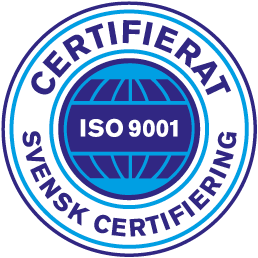Part IV: Prerequisites for a Multi-Site MES Program
When a company decides to embark on a Multi-Site MES program, there are some prerequisites that need to be addressed before they can actually begin. It is of fundamental importance to define the required resources, build up a competent project team, create a solid business case, agree on the scope of the supplied solution, and start crafting a functional requirement specification. Also, the vendor selection process needs to be settled and defined. Moreover, the environment maturity for the overall program needs to be defined and the actions for improvement planned and targeted.
Thus far in this blog series, we have introduced some basic concepts, standards, and frameworks related to Multi-Site MES programs and discussed Multi-Site MES from the perspective of understanding and managing complexity, as well as from the financial perspective, covering benefits, costs and budgeting.
In this fourth part of our blog series, we will examine the prerequisites for starting a Multi-Site MES program. We will have a look at the following key prerequisites:
- Defining the goal and business case
- Defining the project organization and roles
- Process mapping
- Process harmonization
- ICT and Digitalization
An MES solution is not meant to replace professionals; instead, the role of a well-designed system is to provide high-quality information for the production specialists to enable them to make the right decisions.
Defining the Goal and Business Case
When embarking on any new project, the first and foremost thing to do is to answer to these two fundamental questions: “Why are we getting into this?” and “What are the expectations?”
Why are we getting into this?
What are the expectations?
Usually, the goal for a Multi-Site MES program is to improve the efficiency, profitability, transparency, auditability, and sustainability of production. In the business case phase of a project, the potential business benefits of the MES program will already be defined, but when defining the scope of the MES, we should also think about how to set the right targets and how to measure the business case improvements. The goal of the MES program is something we should keep in mind and focus on throughout the entire program, and all the supporting stakeholders should play the same game.
This is the phase where we start to fill the wish jar, but it is very important to also list the needs and requirements of the key stakeholders and scope out the project in a cooperative manner. A stripped version of listing the requirements is to prepare a functional requirement specification (FRS) that can then be attached to the requests for proposal to selected vendors.
Quite often, companies use external assistance in building up a business case and also in scoping and predefining the MES project. In fact, using external assistance is even recommendable, as consultants are much more experienced in doing these evaluations than business representatives. With the help of consultants, you can also find good methodologies and ways to execute the business case modeling. Of course, there might be the risk is that some consultants might have an ambition for some specific platform, which could affect the final choice of a solution. However, this risk can be avoided by carefully selecting the relevant evaluation criteria and processes together with the key business representatives of your company.
An MES solution is not meant to replace professionals; instead, the role of a well-designed system is to provide high-quality information for the production specialists to enable them to make the right decisions. To achieve this goal, we need to carefully select the correct metrics and define them already in the initiation phase of the program: what is the current level, what is the target level, and how can that target level be achieved? A simple gut feeling is just not enough here; if there are no good metrics in place to track the progress towards goals, the risk of misjudgments is substantial.
Defining the Project Organization and Roles
In addition to defining the goal and a business case for the project, one of the most important prerequisites for starting a Multi-Site MES program is to define the project organization and assign roles.
Project Ownership
The first step is to get the business side to take project ownership. An MES is not a solution for the IT organization; instead, it is meant to improve the production efficiency, track the production, and enable well-defined KPIs and other production-related metrics for the production lead. Therefore, the commitment has to come from the ownership, business side.
Quite often, the project owner is a high-level business leader, COO, production president, or similar. Selecting an owner who is in a high position at the company usually helps in the engagement of the top management, but it is not the only way forward. In a mature environment, the process leadership or management can also provide a good basis for success. A well-prepared business case and good communication about the scope are some of the most important things in the early phases of the project. It is crucial that everyone involved in the project is on the same page and knows what is expected and required of the solution; only this way can we fully engage them in the project.
Communications
Communication plays a crucial part in any program. To ensure the success of your MES program, you should create a clear communication plan at the outset of the project. The responsibility for the communications has to be assigned in order to get the information flow alive throughout the whole organization and vendor network. People are motivated and committed when they know how things are progressing and when they understand the overall picture and what it is exactly that they are building in the MES program.
img
Project Manager
Quite typically, one of the first roles to be assigned in a project is the project manager. After that, the top management should give the project manager the authority to start gathering the required resources and specialists for the definition work. The number of people needed depends on the overall scope of the program. Once a rough scope has been defined, the next step is to start mapping the expertise the project is going to need.
Key/Super Users
Firstly, the project is going to need key/super users. They should be selected already in the initialization phase of the project, and in order to ensure that they gain a holistic view of the solution, it would be highly recommendable to provide training to them during the design and building phase. After all, these people are usually the ones who are going to live with the solution after the implementation project has left the site, and it is therefore very important that they understand the solution’s dependencies and functionality. With their support, the organization will be better equipped to deal with minor incidents, and if more support is needed, they will be able to give a good description of the problems for the support organization. The key/super users form the basis for the operating organization, and they are the only ones who have roles in both project and operating organizations.
It is good to bear in mind that there usually is a huge amount of silent knowledge in the production processes. At the production sites, you can often find people with very extensive hands-on experience. If you interview them and ask, for example, about how a specific setup is done in a specific phase, you might just get answers like “it is the gut feeling” and “we just know how it is done”. The MES program scope should also consider this as one important challenge to be tackled. By recording your production processes properly, you can make your production more robust and less person dependent. This correct production information together with the professionality and experience of the operators improves the continuity of manufacturing.
Vendor Selection and Responsibilities
Naturally, the project is also going to need a vendor. When selecting a vendor, it is good to check not only under the hood of the offered solution, but also under the hood of the vendor’s organization. For example, it would make the project easier if the touchpoint people on the shop floor could communicate with the vendor in their local language. That way, you will be able to get much more involvement from the operators to run the implementation phase. Most commercial platforms have a good system integrator network from where you can start selecting the system integrators for your project.
After the vendor has been selected, an important step is to define and agree on the roles of the vendor and the customer company. For example, the RACI matrix is a powerful tool for assigning roles between the parties. The definition of roles should be done in cooperation to ensure that both parties share a mutual understanding of the responsibilities.
img
Governance Model and Steering Groups
Next, you need to define a governance model for the project. Based on our experience, establishing a steering group is highly recommendable. All members of the steering committee need to understand why they are invited, what is expected of them, and what is the authority of the committee. The core task of the steering committee is to guide the project managers, keep an eye on the project scope, and delegate authority for project continuity, for example, at project milestones. The most important thing to remember for the steering committee is that it should be a guiding and assisting function for the project managers, not challenging or hindering.
Depending on the size of the project, there can be two levels of steering groups. A program-level steering group is responsible for the program management and the overall scope, and the project-level steering group is responsible for the site implementation and also for the scope compliance. The program manager is the only person who has to be involved in both committees: in the program-level committee as a presenter and in the project-level committee as a member.
Change Management
One key prerequisite for a successful Multi-Site MES program is efficient change management. Change management actions need to be started early on, right after an implementation plan for the program has been prepared. People need to be trained for the upcoming production process changes.
The changes themselves can be started right away once they have been defined; there is no need to wait for the MES solution to be in production. This will also facilitate the implementation phase: when the processes are already implemented before the solution arrives, there will be one change less that needs to be done in the production during the implementation phase.
Competencies and Training
People and their skills form a crucial part of a successful Multi-Site MES project. Thus, when a company is initiating an MES program, they should consider training some internal people for the project group.
MESA (Manufacturing Enterprise Solutions Association) International is a global non-profit association that offers education and networking possibilities around the topic of Smart Manufacturing and MES/MOM. MESA’s members include manufacturers, producers, industry leaders, and solution providers who are focused on driving business results from manufacturing information. MESA offers both online training and class room training a few times a year, and Roima also organizes these training sessions together with MESA in Finland.
On those courses, your professionals can get a good information package on the different standards and best practices.
Process Mapping
At an early stage of the program’s design phase, an important step is to map the current processes (or update existing process mappings) and recognize similarities between different production processes. This is a task that calls for the most capable production specialists to model the current as-is processes. Often, they need some guidance, too, due to the fact that all processes are very unique and special. Here, we should not consider the processes from the solution point of view; instead, we should adopt a more conceptual approach.
Most functions that are similar to each other can be implemented in the solution using the same framework; there is no need to over-engineer every single part of the solution in order to gain the benefits. A good example is the goods receiving process in a factory: Usually if there is a legacy system in place in goods receiving, all the different tasks are mapped in the solution individually towards each receivable item, although a more efficient way would be to model just a few processes to the solution and link the items to those processes.
Process Harmonization
After the as-is process map has been prepared or updated, the next step is to model the future processes – in other words, to harmonize the processes and create the to-be process map. Here, the carefully prepared as-is process map works as the foundation. The vendor can provide recommendations and ideas for how certain processes could be combined into templates, but the actual validation needs to be done in cooperation between the vendor and the customer’s production specialists. With this kind of co-operation, the vendor will be able to gain a deeper understanding of the customer’s processes and provide a more cost-efficient solution for the company by avoiding the complexity of the MES environment.
When a company starts to harmonize its production processes, the top management needs to be committed to supporting it.
In modeling the future state, it is important to remember that all the tasks performed on the shop floor can be an integral part of the production flow; for example, quality management is a part of the process flow, not an independent task. Therefore, when modeling the future production and material flows, quality data capturing should be in focus, too. By integrating quality entries in the process flow, you can receive auditable, reliable records of them. These records are very valuable in the quality standard audits and product recalls and reclamation processes.
ICT and Digitalization
As we discussed in Part 2 of this blog series (“Complexity”), a Multi-Site MES should not be mistaken for a software project. Instead, it is a much larger and more complex program. As such, a Multi-Site MES program needs to be led and managed by the production team. However, it should naturally also consider and provide for the requirements and needs of the company’s IT department.
Requirements from IT
Before we can embark on an MES program, we need to build up a holistic view of the company’s IT infrastructure. What is the architecture? How can we ensure that the MES solution will be able to run safely, without performance losses, in the environment where it is going to be deployed? A good way to start is to gather up the specifications for network requirements.
img
Ownership of Automation
Quite typically, there is inconsistency between information technology (IT) and operational technology (OT) as to who owns the automation layer. In any case, is important to understand that whoever owns the automation should be a part of the project journey from the very beginning.
The definitions and design need to be in sync between the MES and automation layers, and there is no other way to guarantee that than to take the automation representatives on board to the project. This also prevents the company from floating into a situation where automation and MES contain overlapping functionalities and reporting capabilities or dashboards. The company should also define the capabilities that exist on different layers and in different solutions.
The Manufacturing Enterprise Solutions Association (MESA) provides very good standards for these kinds of linings.
Master Data Management
Succeeding in the actual Multi-Site MES program relies strongly on the maturity of master data. The amount of master data that is required for the project often comes as a surprise for companies.
Commonly, the biggest problems in a MES rollout project are bad master data and the lack of know-how of where and how to maintain it. Therefore, it is important to prepare the organization for this challenge and start mapping the master data already in the early phases of the MES program. Finding the correct resources and aligning them to the core program organization is a key to success.
Realistic Expectations for the Platform
If you have doubts about the vendor’s understanding of your processes and/or the solutions fit the purpose, the expectations can be validated with a well-defined demo or Proof of Concept. In both cases, you need to define good use cases, and you have to share a mutual understanding with the vendor about the expectations and about how those expectations should be measured and proofed. Only then can we be sure that we are on the right track to fulfill the scope and achieve full compliance of the solution.
The expectations towards digitalization are often extremely high; in today’s technology buzz, it is very difficult to keep calm and maintain realistic expectations. Solutions are learning and everything seems so easy in sales materials, but it is important to understand that you cannot achieve everything with one project. It is of outmost importance to set realistic goals for the project and phase it appropriately. A good solution is, in essence, a solution that provides the platform and assistance for the production leaders and other specialists to make better decisions, with real figures.
Thus, the most important question that you need to ask during the definition phase is this:
What will add value and bring us real benefits?
By focusing on 20% of the required features, we can reach 80% of the desired benefits. It is only natural that the operators, stakeholders, and executives would want to fulfill the whole initial scope, but putting the features in a prioritized roadmap will not only help to focus on the most value-adding tasks but also to keep the project on budget.
When starting a MES project, it is quite obvious that some old solutions (legacies) in production are going to have to be replaced. When planning this changeover, it is important to consider the emotional aspect of the change. Quite typically, the legacy systems to be replaced are so-called homegrown solutions which have usually been built by internal specialists or ordered as tailor-made solutions, and quite often, these are best-of-breed type of solutions that fit the production better than any commercial solution. However, they might be lacking support and be expensive to maintain, and, typically, they are highly person dependent and pose high business risks, and therefore they need to be replaced.
In any case, the employees who are used to using these solutions or who support or develop them can pose great resistance towards the project. Rather than ignoring these specialists, it is far more fruitful to align them to the project, as these people typically are the most experienced ones in the production process area. They understand the business logic and dependencies in the processes. System replacement is quite often a part of the business case consideration, so it needs to be done anyway.
Conclusions
Staring a Multi-Site MES program is already a large project in itself. In this blog post, we have introduced some critical tasks to be taken care of and some important recommendations to consider before venturing into the actual project. However, we should bear in mind that every program is still unique. The most important thing to remember is to communicate effectively, find the right people and keep them on board, and Invest time to understand the requirements that fulfill the company’s specific business needs.
In our next blog post, we will examine the topic of manufacturing operations management and discuss the current state definition and targets assessment for a Multi-Site MES program. We will provide our thinking on the use of maturity assessment for the modeling of a future roadmap and a company-wide development plan.
Plenty of interesting considerations ahead, so stay tuned!











